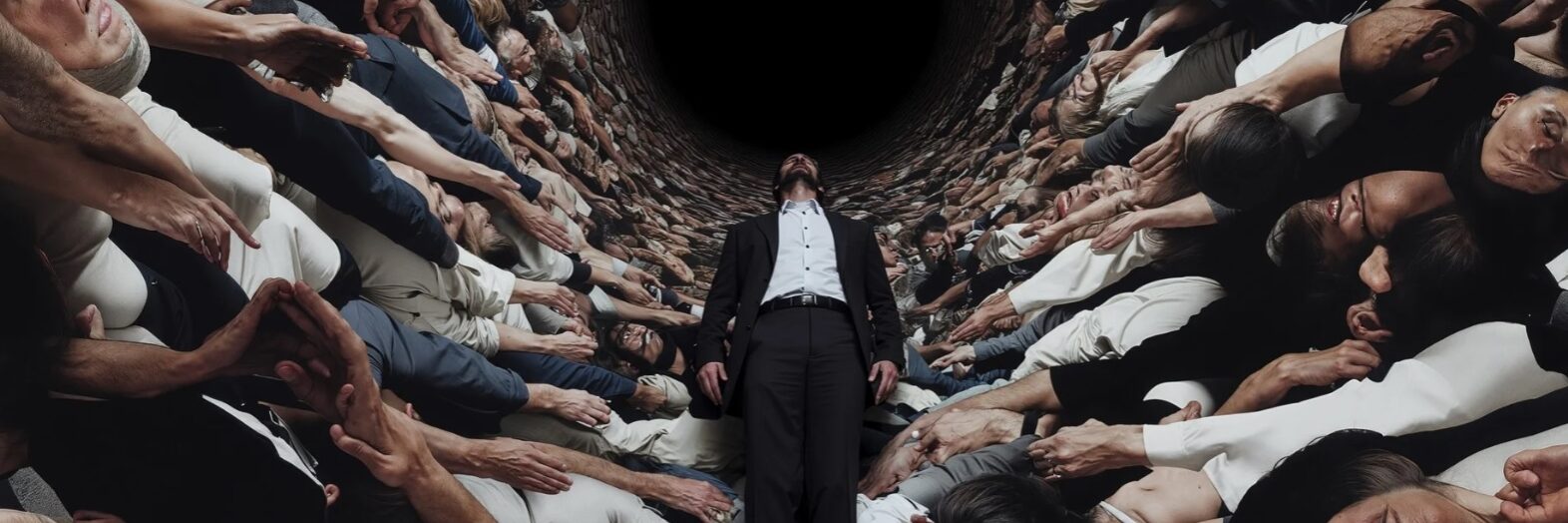Mr. Relative at Saatchi Gallery: A Pole Among the Pioneers of Generative Art
Anna Domin
The Polish generative artist known as Mr. Relative will present his collection This is Humanity at London’s Saatchi Gallery during the prestigious Digitalism exhibition, part of the British Art Fair (25–28 September 2025). This is not only an extraordinary honor but also proof that Polish creators are becoming part of the future of technology-driven art and are increasingly visible on the international stage. The artist is among 60 visionaries redefining art in the digital age.
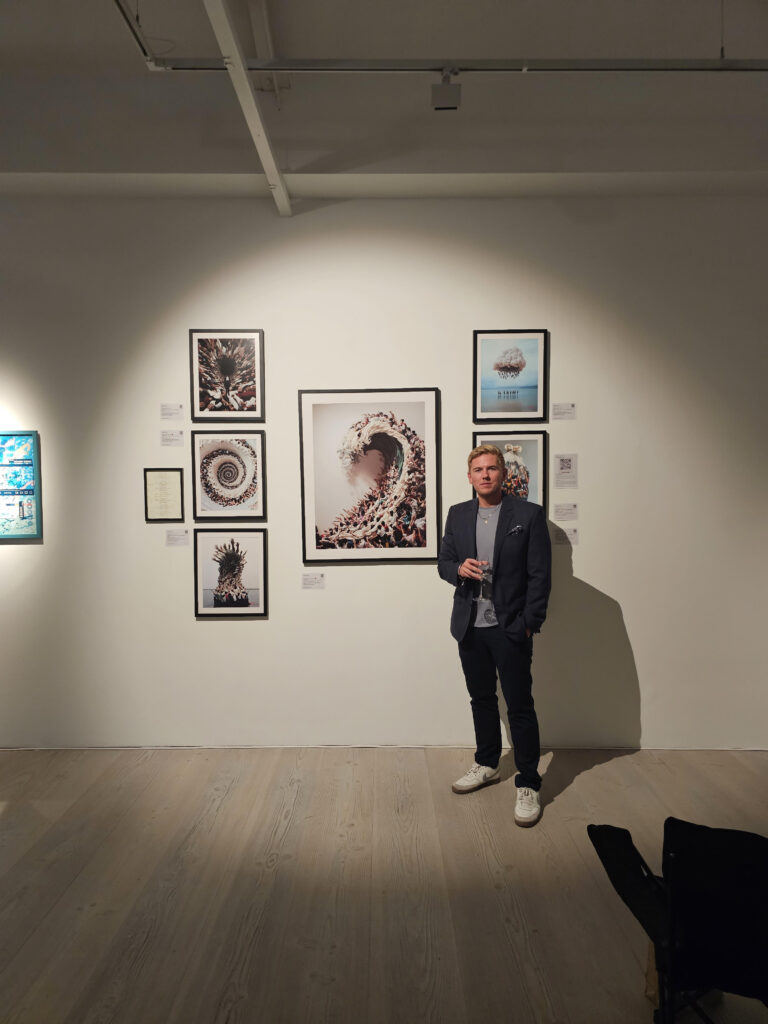
Mr. Relative w Saatchi Gallery
For decades, London has been the epicenter of artistic breakthroughs. It was here that Damien Hirst and Tracey Emin, members of the famous Young British Artists, built their careers. It was here that Francis Bacon created his most intense and dramatic works, and Lucian Freud painted portraits that forever changed the way figurative art was perceived. London has always drawn creators from around the globe, as art here becomes a universal language and success opens doors to markets worldwide. Within this landscape, Saatchi Gallery holds a special significance – since the 1980s, it has been regarded as a springboard for artists entering the global circuit. It was Charles Saatchi who elevated the Young British Artists to stardom, transforming them into icons of contemporary art. Today, Saatchi Gallery remains one of the most prestigious addresses in the art world – exhibiting here signals that an artist has entered the first league.
In September 2025, the gallery’s spaces will be filled with Digitalism – an exhibition poised to redefine the place of generative art in history. Among sixty creators from around the world, alongside pioneers of generative, virtual, and immersive art, will be the Polish artist Mr. Relative. This is not just another show. Digitalism is a manifesto, demonstrating that digital art is no longer a curiosity on the margins but a fully-fledged movement, comparable to the birth of Impressionism in 1874 or Surrealism in 1924. The exhibition’s curator, Rebekah Tolley, puts it plainly: “Digitalism is not about the tools, it’s about a way of seeing. It’s the next chapter in art history, only just beginning.”
The Birth of Mr. Relative
Who is the artist who journeyed from a home studio to the walls of one of the world’s leading galleries? Mr. Relative is not just a pseudonym, but above all an idea – the embodiment of the notion that everything is relative.
“The word relative means both someone close and relativity – something shifting, uncertain. Within this duality lies the space for art that compels us to question the stories we take for granted,” explains Mr. Relative.
Since 2021, the artist has been using AI algorithms to create images balanced between dream and waking reality. These are not simple visualizations but complex narratives – dense, unsettling, at once beautiful and brutal. This ambiguity has captured the attention of thousands of viewers worldwide, as well as celebrities. One of the first to be moved by his work was Sharon Stone, who shared an early piece from the This is Humanity cycle – We make waves. That moment turned an experiment into a fully fledged project, and the collection began to take on a new, global dimension.
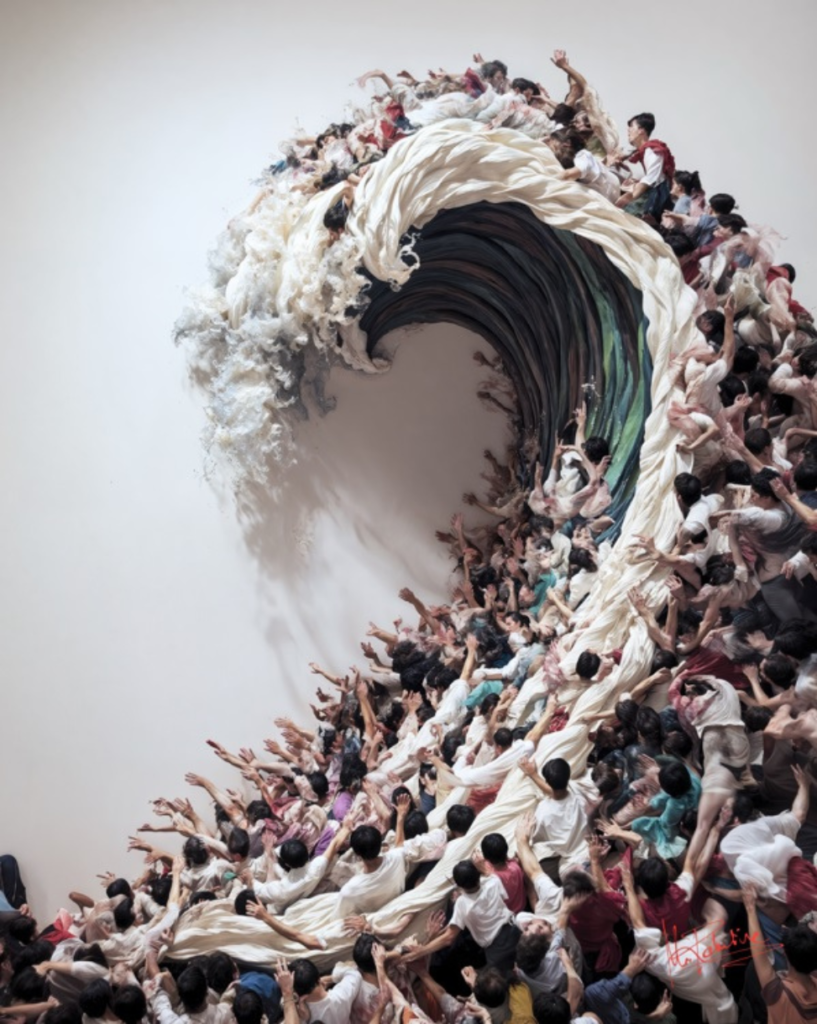
We make waves signed, Mr. Relative
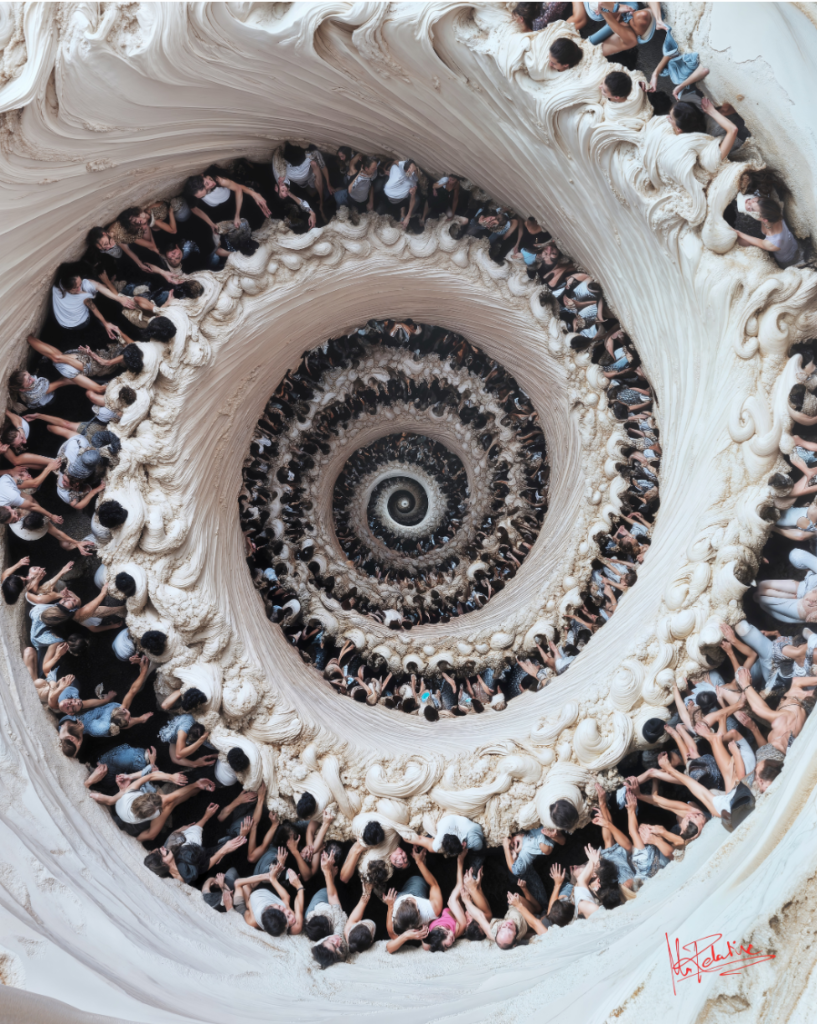
Fibonacci, Mr. Relative
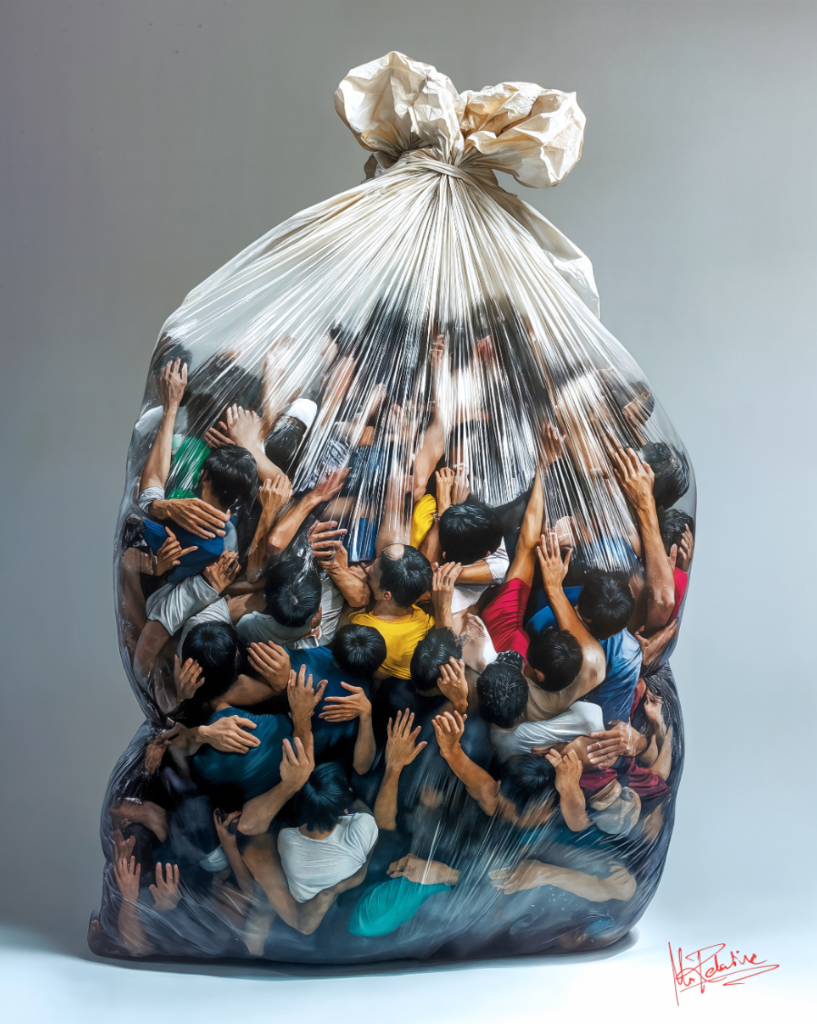
Trash, Mr. Relative

Rebirth, Mr. Relative
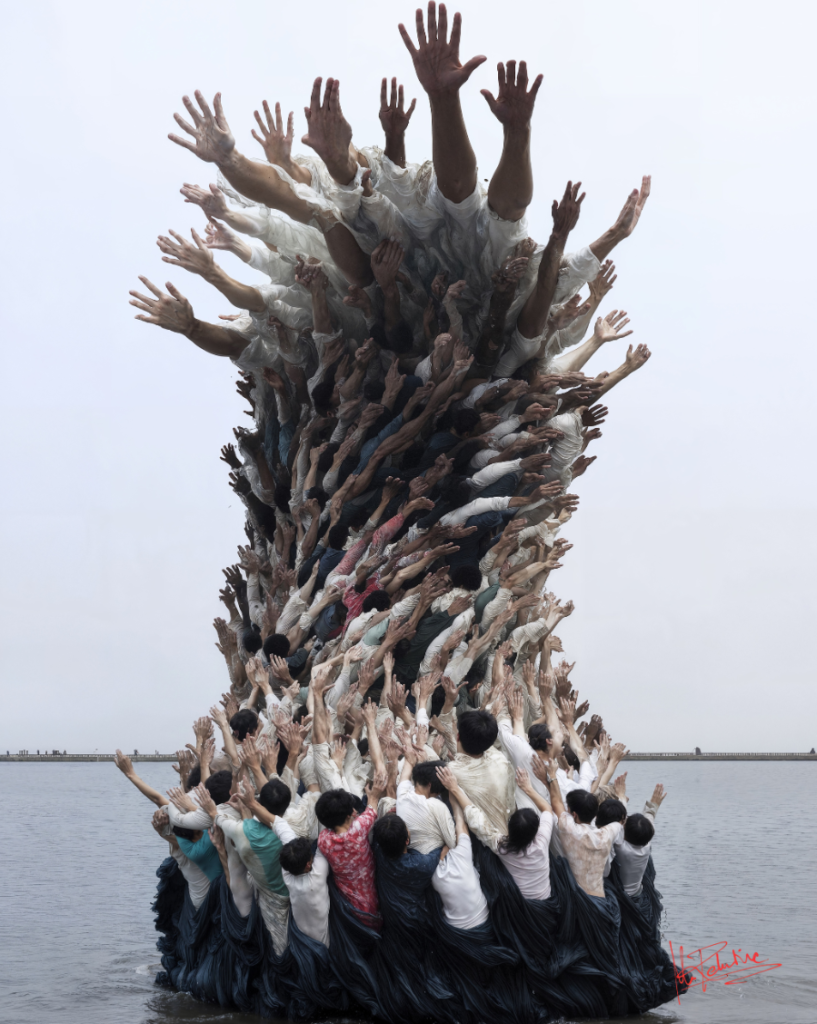
Twister, Mr. Relative
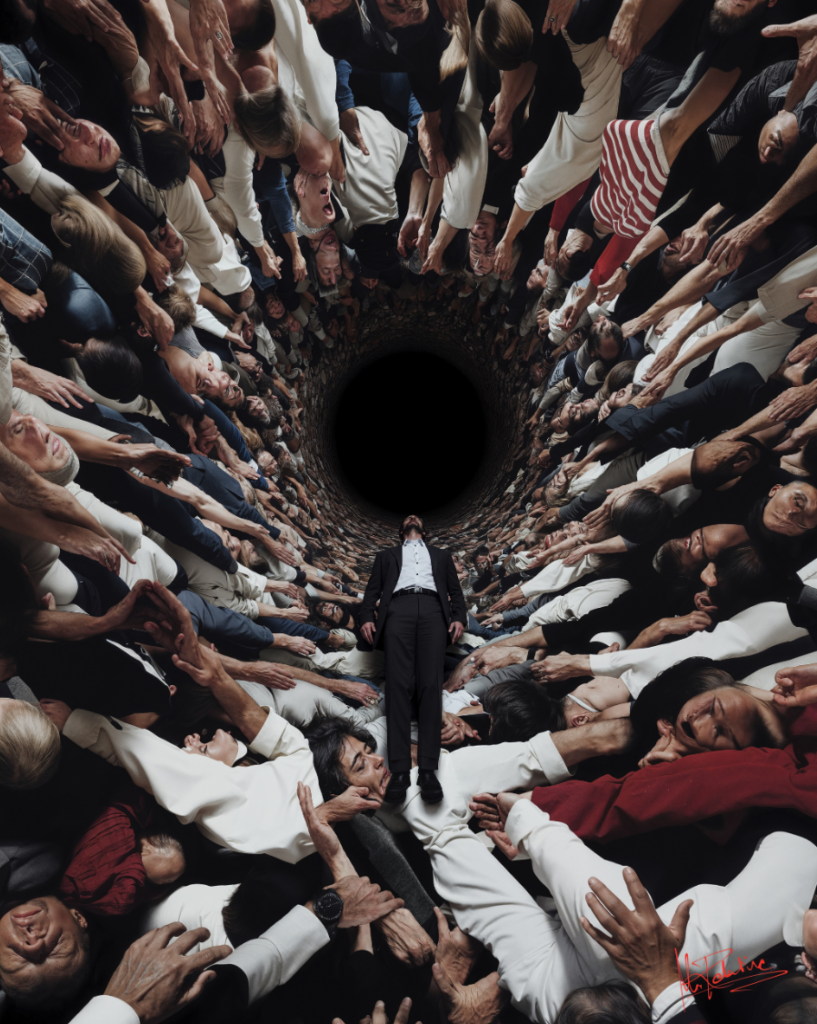
Black Hole, Mr. Relative
This is Humanity – Man as Landscape and Metaphor
The collection to be shown in London tells the story of the human being transformed into symbol, space, and matter. In one work the body becomes architecture, in another – food. It is art that touches on our habits, obsessions, and fears, confronting us with our own reflection.
“I wanted the viewer to find themselves among the crowd of figures, in the chaos that we ourselves co-create. These works are about our responsibility, but also about our entanglement in the systems we have built,” says Mr. Relative.
In these compositions one can sense echoes of Bosch or Goya, though the artist never consciously cites them. Grotesque, distortion, and dramatic metaphor appear naturally here, as a contemporary language filtered through artificial intelligence. It is in this aesthetic, blending beauty and unease, that the strength of This is Humanity lies: provoking questions about who we are and where we are heading.
Digitalism – The Architecture of New Art
The Digitalism exhibition at Saatchi Gallery is more than a group show. It is a carefully designed narrative of how technology and art merge into one. Immersive installations, generative works, VR, AR, and AI – alongside sound, light, and architecture – combine into a multisensory experience. The viewer will no longer be a passive observer but an active participant immersed in the environment of future art.
For architects and interior designers, this marks a turning point: exhibition spaces, museums, and private collections are no longer static. Images can shift, breathe, and respond to the viewer’s presence. The gallery becomes a dynamic stage where humans and technology co-create new realities. Within this landscape, This is Humanity gains added resonance. It is not only an artistic project but a gesture of presence – proof that a Polish creator has entered the very heart of the global conversation about the future of art. For the artist, it is a milestone: from a Warsaw studio to one of the world’s most prestigious galleries. For Polish digital art, it is a sign that its voice is beginning to be heard on the global stage.
A Pole at the Center of the Global Scene
Mr. Relative’s presence at Saatchi Gallery is symbolic. It is not only a personal triumph but also evidence that Polish generative art is increasingly part of the global dialogue. The artist shows no sign of slowing down – he is expanding the This is Humanity collection to one hundred works and is developing a large-scale installation that will connect the pieces into a moving, spatial spectacle.
Importantly, the London presentation is only the beginning. In October, the collection We are the Universe will be shown at Einsight Gallery in Shenzhen (10–26 October 2025), and in November This is Humanity will be part of a major international showcase during OffBratislava (from 7 November) – a festival where photography and contemporary art meet Europe’s most daring artistic experiments. This is the prelude to a broader exhibition tour, with further presentations planned across continents, but also projects in Poland. In 2026, the artist plans to open his own space – Relative Gallery – in the Lubusz region. The gallery will be housed in adapted farm buildings in the Leniwka complex and will become a place where digital art meets nature and tradition.
This is no coincidence, but a sign of the times: digital art knows no boundaries, and its center can be anywhere. This autumn, London will be that center, as Saatchi Gallery witnesses the birth of a new movement – Digitalism. And we are all the more pleased to see among its pioneers a Pole who believes that “perception is the mother of all beliefs” – that how we see shapes what we believe. Mr. Relative does not provide ready-made answers. Instead, he opens space for questions, provoking reflection and confrontation with our own convictions. And art – when it asks questions more powerfully than it offers answers – truly begins to change the world.




